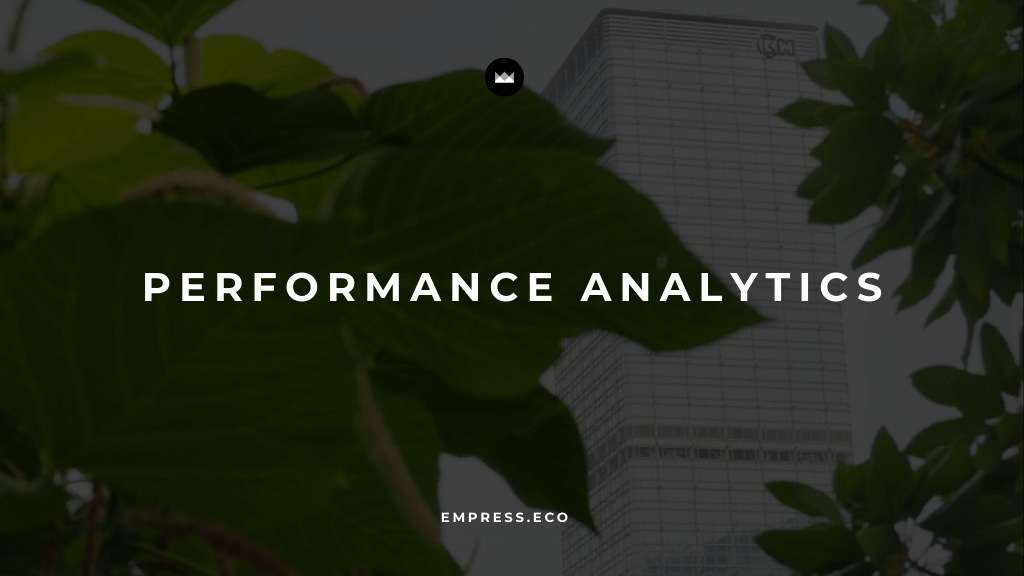
Elevate Business Strategies with Aura’s Performance Analytics
Table of Contents
Businesses have access to an unprecedented amount of information. The challenge, however, lies in effectively harnessing this data to improve strategies and drive success. This is where performance analytics comes into play. Performance analytics is the systematic process of analyzing data to evaluate the effectiveness of business strategies, optimize operations, and make informed decisions. When done correctly, performance analytics can significantly enhance a company's ability to achieve its objectives and maintain a competitive edge.
In this guide, we’ll explore the key benefits of performance analytics, delve into the steps for implementing an effective performance analytics strategy, and discuss the challenges businesses may face along the way.
The Power of Performance Analytics
Performance analytics goes beyond simply tracking metrics; it involves a deep dive into data to extract meaningful insights that can transform the way a business operates. By understanding what’s working and what’s not, businesses can make data-driven decisions that lead to better outcomes.
1. Informed Decision-Making
One of the primary benefits of performance analytics is its ability to provide businesses with valuable insights that inform decision-making. In a landscape where every decision can impact the bottom line, having access to accurate and relevant data is crucial. Performance analytics allows businesses to evaluate the effectiveness of their strategies by analyzing key performance indicators (KPIs) such as return on investment (ROI), conversion rates, and customer acquisition costs.
For instance, a marketing team might use performance analytics to determine which campaigns are generating the most leads or conversions. By analyzing the data, they can identify successful tactics and allocate resources more effectively, ensuring that future campaigns are even more successful.
2. Enhanced Strategy Optimization
Strategy optimization is about fine-tuning business approaches to maximize efficiency and effectiveness. Through performance analytics, businesses can identify areas where strategies are falling short and make the necessary adjustments. Whether it’s a product launch, a marketing campaign, or an operational process, understanding the data behind performance allows for continuous improvement.
For example, if a company notices that its customer retention rates are lower than expected, performance analytics can help pinpoint the reasons behind the drop. It might reveal issues with customer service, product quality, or even pricing strategies. Armed with this information, the company can take targeted action to address the problem and improve overall performance.
3. Increased Accountability
Performance analytics fosters accountability within an organization by establishing clear benchmarks and performance indicators. When employees and teams have access to data that shows how their efforts are contributing to overall business goals, it creates a sense of ownership and responsibility. This transparency can drive motivation and ensure that everyone is aligned with the company’s objectives.
For instance, a sales team might use performance analytics to track their progress toward quarterly targets. By regularly reviewing their performance data, they can identify areas for improvement and adjust their strategies to ensure they meet their goals.
4. Improved Resource Allocation
Resource allocation is a critical aspect of any business strategy. By understanding which strategies are most effective, businesses can allocate resources more efficiently, focusing on high-impact activities that drive growth. Performance analytics provides the data needed to make informed decisions about where to invest time, money, and effort.
For example, a company may discover through performance analytics that its social media campaigns are driving more traffic and conversions than its email marketing efforts. With this insight, the company can allocate more resources to social media, optimizing its marketing budget for better results.
Implementing Effective Performance Analytics
To harness the full potential of performance analytics, businesses need to implement a structured approach that includes identifying key metrics, collecting and organizing data, utilizing analytical tools, and acting on the insights gained. Here’s how to get started:
1. Identify Key Performance Metrics
The first step in performance analytics is identifying the key performance metrics that are most relevant to your business. These metrics should align with your overall business goals and provide insights into the effectiveness of your strategies.
Common performance metrics include:
- Return on Investment (ROI): Measures the profitability of an investment.
- Conversion Rates: The percentage of visitors or leads that take a desired action, such as making a purchase or signing up for a newsletter.
- Customer Acquisition Cost (CAC): The cost associated with acquiring a new customer.
- Engagement Levels: Metrics that measure how actively customers are interacting with your brand, such as through social media likes, shares, or comments.
By focusing on the right metrics, you can gain a clear understanding of how well your strategies are performing and where there’s room for improvement.
2. Collect and Organize Data
Once you’ve identified your key performance metrics, the next step is to collect and organize the necessary data. Data can come from various sources, including customer relationship management (CRM) systems, website analytics, social media platforms, and financial records.
It’s essential to ensure that the data you collect is accurate, comprehensive, and relevant to your performance metrics. Data quality is critical for meaningful analysis, so businesses must implement processes to validate and clean data regularly.
Organizing data in a structured format, such as a centralized database or a data warehouse, makes it easier to analyze and interpret. This organization also facilitates the use of advanced analytical tools and techniques.
3. Utilize Analytical Tools and Techniques
With your data in hand, the next step is to employ analytical tools and techniques to assess performance. There are several methods businesses can use to analyze data, depending on their needs and objectives:
- Regression Analysis: A statistical method that examines the relationship between variables. It’s useful for identifying factors that influence performance and predicting future trends.
- Data Visualization: Tools like dashboards and charts help visualize data in a way that’s easy to understand. Visual representations of data can reveal patterns and trends that might not be immediately apparent in raw data.
- Predictive Modeling: This involves using historical data to create models that predict future outcomes. Predictive analytics can help businesses anticipate trends, optimize strategies, and make proactive decisions.
By leveraging these tools and techniques, businesses can gain deeper insights into their performance and identify opportunities for optimization.
4. Interpret and Act on Insights
Data analysis is only valuable if it leads to actionable insights. Once you’ve analyzed your performance data, the next step is to interpret the findings and use them to inform your strategies.
For example, if your analysis shows that a particular marketing channel is underperforming, you might decide to reallocate resources to a more effective channel. Alternatively, if your data reveals a drop in customer satisfaction, you might investigate the root causes and implement changes to improve the customer experience.
The key is to use performance analytics not just as a reporting tool, but as a decision-making tool that drives continuous improvement. Regularly reviewing your performance data and making adjustments as needed ensures that your strategies remain aligned with your business goals and responsive to market conditions.
5. Monitor and Adjust
Performance analytics is not a one-time exercise; it’s an ongoing process. To stay ahead of the competition and adapt to changing market dynamics, businesses must continuously monitor their performance metrics and adjust their strategies accordingly.
This involves setting up a regular review process, such as monthly or quarterly performance reviews, where teams can discuss their progress, share insights, and make data-driven decisions. By maintaining a cycle of continuous monitoring and adjustment, businesses can ensure that their strategies remain effective and aligned with their objectives.
Challenges and Considerations in Performance Analytics
While performance analytics offers numerous benefits, it’s not without its challenges. Businesses must be prepared to address these challenges to maximize the effectiveness of their analytics efforts.
1. Data Quality and Accuracy
The accuracy and reliability of your data are critical to meaningful analysis. Inaccurate or incomplete data can lead to incorrect conclusions and misguided decisions. To ensure data quality, businesses must implement rigorous data validation and cleaning processes.
This might involve cross-referencing data from multiple sources, using automated tools to detect and correct errors, and regularly updating data to reflect the most current information. Ensuring that your data is clean and reliable is foundational to successful performance analytics.
2. Complexity and Expertise
Analyzing performance data can be complex, especially when dealing with large datasets or advanced statistical methods. This complexity requires specialized expertise, which may not always be available in-house.
Investing in skilled personnel—whether through hiring, training, or partnering with external experts—is essential for successfully implementing performance analytics. Businesses should also consider investing in advanced analytics tools and software that can simplify the analysis process and make insights more accessible.
3. Integration with Business Processes
Integrating performance analytics into existing business processes requires careful planning and coordination. Analytics should be seamlessly integrated into decision-making workflows, so that data-driven insights are used to inform strategies across the organization.
This might involve setting up dashboards that provide real-time performance data to key stakeholders, training teams on how to use analytics tools, and establishing processes for incorporating analytics into regular business reviews.
Conclusion
Performance analytics is a powerful tool that enables businesses to refine their strategies and improve their effectiveness through data-driven insights. By systematically analyzing key performance metrics, companies can make informed decisions, optimize their operations, and achieve better outcomes.
As the importance of data continues to grow, businesses that embrace performance analytics will be well-positioned to maintain a competitive edge and drive long-term success. By addressing challenges related to data quality, complexity, and integration, and by fostering a culture of continuous improvement, businesses can unlock the full potential of performance analytics and achieve their strategic goals.
Whether you’re looking to enhance your marketing efforts, streamline operations, or improve customer satisfaction, performance analytics provides the insights you need to make smarter, more effective decisions. In a world where data is king, those who harness its power will be the ones who thrive.
Empress Newsletter
Join the newsletter to receive the latest updates in your inbox.







